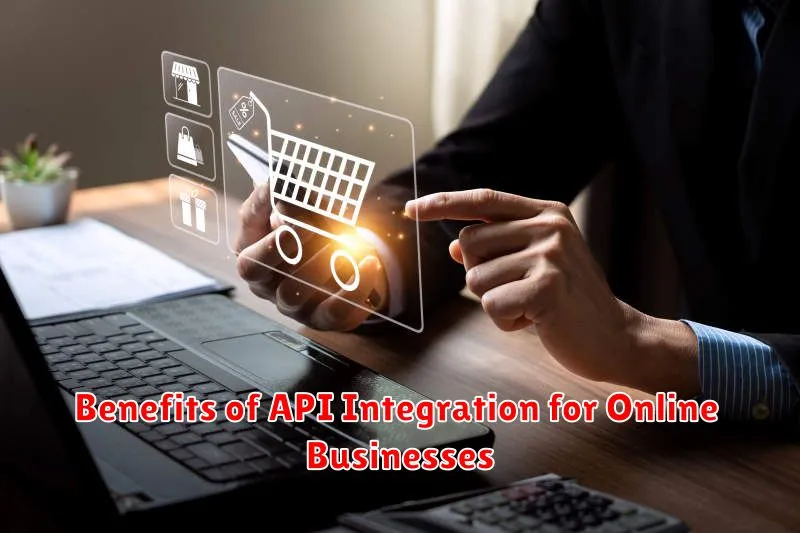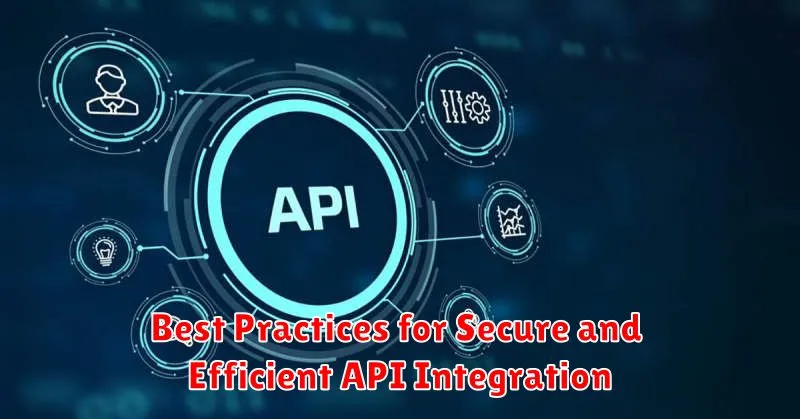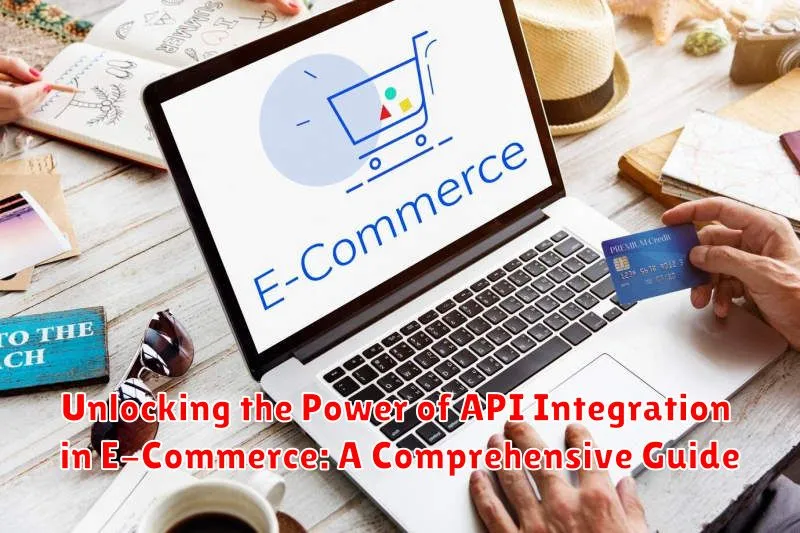In today’s interconnected digital landscape, API integration plays a pivotal role in the success of any e-commerce business. This comprehensive guide delves into the power of API integration, exploring how it can revolutionize your e-commerce operations, streamline processes, and ultimately drive growth. From enhancing customer experiences to optimizing inventory management and expanding marketing reach, understanding and implementing effective API integration strategies is crucial for staying competitive in the ever-evolving world of online commerce. This guide will provide you with the knowledge and insights needed to unlock the full potential of APIs for your e-commerce platform.
This guide will cover various aspects of API integration in e-commerce, including different types of APIs, key benefits, common use cases, best practices for implementation, and potential challenges. Whether you are a seasoned e-commerce professional or just starting out, this guide will equip you with the necessary tools and information to harness the transformative power of API integrations and propel your business forward in the dynamic e-commerce landscape. Prepare to discover how seamless data exchange and interconnected systems can optimize your e-commerce operations and unlock unprecedented levels of efficiency and growth.
What is an API and How Does It Work in E-Commerce?
An API, or Application Programming Interface, is a set of rules and specifications that allows different software systems to communicate with each other. Think of it as a messenger that delivers requests and responses between applications.
In the context of e-commerce, APIs enable online stores to connect with various third-party services. This allows for seamless data exchange and functionality integration. For example, an e-commerce platform might use an API to connect with a payment gateway to process transactions securely.
Here’s a simplified breakdown of how an API works in e-commerce:
- Request: Your e-commerce platform sends a request to the API of a third-party service (e.g., requesting shipping rates).
- API Processing: The API receives the request and processes it based on predefined rules.
- Response: The API sends a response back to your e-commerce platform (e.g., providing the requested shipping rates).
- Integration: Your platform integrates this response into its functionality, displaying the shipping rates to the customer.
Different Types of APIs Used in E-Commerce
E-commerce platforms leverage various types of APIs, each serving a specific purpose. Understanding these distinctions is crucial for effective integration.
Public APIs
Public APIs, also known as open APIs, are available to external developers. They provide a controlled way for third-party applications to interact with the e-commerce platform’s data and functionality. Often, these APIs are accompanied by documentation and sometimes require registration or API keys.
Private APIs
Private APIs are designed for internal use within a company. They facilitate communication between different systems and applications within the e-commerce ecosystem, such as connecting inventory management with the online storefront.
Partner APIs
Partner APIs are selectively shared with specific business partners. These APIs enable seamless integration with crucial services, such as payment gateways, shipping providers, and marketing automation tools. Access to partner APIs typically requires explicit authorization and agreements.
Composite APIs
Composite APIs combine multiple API calls into a single request. This improves efficiency by reducing the number of back-and-forth communications, especially beneficial for complex operations involving different data sources.
Benefits of API Integration for Online Businesses

API integration offers numerous advantages for e-commerce businesses, streamlining operations and enhancing customer experiences. Improved efficiency is a key benefit, automating tasks and reducing manual data entry. This leads to reduced operational costs and allows staff to focus on strategic initiatives.
Enhanced customer experience is another significant advantage. APIs enable personalized shopping experiences, real-time order tracking, and seamless integration with various platforms. This fosters increased customer satisfaction and loyalty.
Scalability and flexibility are also greatly improved. APIs allow businesses to easily adapt to changing market demands and integrate new functionalities as needed, supporting business growth and innovation.
Data-driven insights are readily available through API integration. Access to real-time data on sales, inventory, and customer behavior enables businesses to make informed decisions, optimize their strategies, and improve overall performance.
Examples of API Integration in Action: From Payment Gateways to Shipping Providers
API integration plays a crucial role in streamlining various e-commerce operations. Let’s explore some practical examples.
Payment Gateways
Payment gateway APIs enable secure online transactions. When a customer checks out, the e-commerce platform uses an API to communicate with the payment gateway (e.g., PayPal, Stripe). This allows customers to enter payment information directly on the site without being redirected, enhancing the user experience.
Shipping Providers
Integrating with shipping provider APIs (e.g., FedEx, UPS) offers several advantages. Real-time shipping rate calculations can be displayed at checkout. Automated order fulfillment processes can trigger shipping label creation and tracking updates directly within the e-commerce platform. This reduces manual work and improves order processing efficiency.
Customer Relationship Management (CRM) Systems
CRM APIs allow e-commerce platforms to synchronize customer data. New customer registrations, order histories, and support interactions can be automatically updated in the CRM. This provides a holistic view of the customer journey and empowers businesses to personalize marketing campaigns and improve customer service.
Choosing the Right APIs for Your E-Commerce Needs
Selecting the right APIs is crucial for maximizing the benefits of integration. Careful consideration of your specific business requirements, technical capabilities, and budget constraints is essential.
Begin by clearly defining your objectives. What functionalities do you aim to enhance or automate? Do you need to improve inventory management, streamline shipping, personalize customer experiences, or expand marketing reach?
Next, evaluate potential API providers. Research their reputation, security measures, documentation, and support services. Consider factors like scalability, reliability, and pricing models.
Technical compatibility is another key aspect. Ensure the chosen APIs integrate seamlessly with your existing e-commerce platform and other systems.
Finally, thoroughly test the APIs before full implementation. This helps identify potential issues and ensures smooth operation.
Steps to Integrate APIs into Your E-Commerce Platform
Integrating APIs can significantly enhance your e-commerce platform. Follow these key steps for a successful integration:
1. Planning and Assessment: Clearly define your objectives. Identify the specific functionalities you want to enhance through API integration, such as payment processing, shipping, or inventory management. Analyze existing systems and resources.
2. API Selection: Research and select the appropriate APIs that align with your requirements. Evaluate factors such as functionality, documentation, security, and pricing.
3. Authentication and Authorization: Securely connect to the chosen APIs using appropriate authentication methods, such as API keys or OAuth. Configure access controls and permissions to protect sensitive data.
4. Development and Integration: Use the API documentation to understand the available endpoints and data structures. Write code to interact with the API, handling requests and responses. Integrate the API calls into your e-commerce platform’s workflow.
5. Testing and Deployment: Thoroughly test the API integration to ensure it functions correctly and handles various scenarios, including error conditions. Deploy the integration to your live environment gradually, monitoring performance and stability.
Common Challenges of API Integration and How to Overcome Them
Integrating APIs, while offering significant benefits, can present various challenges. Understanding these hurdles is crucial for smooth implementation.
Data Mapping and Transformation
Data inconsistencies between systems can complicate integration. Employing clear data mapping strategies and robust transformation tools can resolve these issues, ensuring seamless data flow.
API Documentation and Understanding
Incomplete or unclear API documentation can hinder development. Thorough analysis of available documentation, alongside direct communication with API providers, is essential for a complete understanding of the API’s functionalities.
Security Concerns
Security vulnerabilities are a major concern. Implementing strong authentication measures, such as OAuth 2.0, and regularly testing security protocols are critical for protecting sensitive data.
Error Handling and Debugging
Effective error handling is vital for maintaining a stable integration. Implement robust logging and monitoring systems to quickly identify and resolve issues.
Best Practices for Secure and Efficient API Integration

Implementing API integrations effectively requires careful planning and adherence to best practices. Security is paramount. Always use HTTPS for encrypted communication and implement robust authentication mechanisms like OAuth 2.0 or API keys. Regularly audit API access and permissions to minimize vulnerabilities.
Thorough testing is essential. Employ various testing methods, including unit, integration, and performance tests, to ensure seamless functionality and identify potential issues early on. Establish clear monitoring and error handling procedures. Utilize logging and alerting systems to track API performance and quickly address any errors or disruptions.
Documentation is crucial. Maintain comprehensive and up-to-date API documentation that clearly outlines functionalities, parameters, and error codes. This facilitates easier troubleshooting and collaboration among developers.
Consider using an API gateway to manage and secure API traffic, enforce rate limiting, and streamline authentication.
Future Trends in API Integration for E-Commerce
The future of API integration in e-commerce promises even more seamless and interconnected experiences. Artificial intelligence (AI) and machine learning (ML) will play increasingly significant roles in automating integration processes and personalizing shopping experiences. Expect smarter integrations that can predict consumer behavior and optimize inventory management in real-time.
Serverless architectures and microservices are gaining traction, allowing for more flexible and scalable integrations. This shift facilitates faster deployments and reduces infrastructure costs.
The rise of headless commerce, separating the front-end presentation layer from the back-end functionality, empowers businesses to create unique and omnichannel customer journeys through diverse touchpoints. This trend relies heavily on robust API integrations to connect various systems and deliver a unified brand experience.
Finally, enhanced security measures will remain a top priority. Expect to see greater adoption of API security standards and authentication methods like OAuth 2.0 and OpenID Connect, ensuring secure data exchange across platforms.

